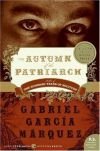
The Autumn of the Patriarch is a novel written by Gabriel García Márquez in 1975. A "poem on the solitude of power" according to the author, the novel is a flowing tract on the life of an eternal dictator. The book is divided into six sections, each retelling the same story of the infinite power held by the …

On her twelfth birthday, Sierva Maria – the only child of a decaying noble family in an eighteenth-century South American seaport – is bitten by a rabid dog. Believed to be possessed, she is brought to a convent for observation. And into her cell stumbles Father Cayetano Delaura, who has already dreamed about a girl …

At the age of forty-six General Simon Bolivar, who drove the Spanish from his lands and became the Liberator of South America, takes himself into exile. He makes a final journey down the Magdalene River, revisiting the cities along its shores, reliving the triumphs, passions and betrayals of his youth. Consumed by the …

Living to Tell the Tale is the first volume of the autobiography of Gabriel García Márquez. The book was originally published in Spanish in 2002, with an English translation by Edith Grossman published in 2003. Living to Tell the Tale tells the story of García Márquez' life from 1927 through 1950, ending with his …

In Evil Hour is a novel by Colombian writer Gabriel García Márquez, first published in 1962. Written while García Márquez lived in Paris, the story was originally entitled Este pueblo de mierda. Rewritten, it won a literary prize in Colombia. Some of the same characters and situations found in La mala hora later …

"Big Mama's Funeral" is a long short story by Gabriel García Márquez that satirizes Latin American life and culture. It displays the exaggeration associated with magic realism. Most of the place names mentioned come from Colombia, and "Big Mama" herself is an exaggeration of the 'cacique', a familiar figure in Latin …

 English
English Español
Español Deutsch
Deutsch

